Html Input Number Without Arrows
The HTML input element with type “number” provides a convenient way for users to input numeric values. By default, it displays a pair of up and down arrows that allow users to increment or decrement the value. However, there are cases where you may want to hide or disable these arrow buttons to restrict the input range or customize the appearance of your form. In this article, we will explore several techniques to achieve this functionality, including using HTML attributes, CSS, JavaScript, and popular frameworks like Tailwind, Antd, and Bootstrap.
Disabling the Up and Down Arrows:
One straightforward way to disable the arrow buttons is by utilizing the HTML attributes “min” and “max” to limit the range of acceptable values. By setting both attributes to the same value, you effectively restrict the user from incrementing or decrementing the number. For example, if you want to allow only the number 5, you can write:
“`html
“`
This approach ensures that the user can only enter or modify the specified number without offering any controls to increase or decrease it.
Applying CSS to Hide the Buttons:
If you prefer to hide the arrow buttons while still allowing users to input values within a specific range, CSS can help achieve this. Here’s an example of how you can accomplish this using plain CSS:
“`html
“`
This CSS snippet targets the pseudo-elements “::-webkit-inner-spin-button” and “::-webkit-outer-spin-button” specific to WebKit browsers, like Chrome and Safari, which are responsible for rendering the up and down arrows. By setting the appearance to “none” and removing any margin, the buttons become invisible, providing a cleaner look for your form.
Replacing the Input Type with a Text Field:
Another approach to disabling the arrow buttons is by changing the “type” attribute of the input element from “number” to “text”. By using a text field, you can prevent the browser from displaying the arrow buttons altogether. However, keep in mind that this technique will remove any validation and constraint related to numeric input. If you still require these functionalities, you will need to incorporate them using JavaScript or a library.
Using JavaScript to Remove the Arrows:
If you want more control over the appearance and behavior of your input fields, you can utilize JavaScript to remove the arrow buttons dynamically. Here’s an example using plain JavaScript:
“`html
“`
In this script, we attach event listeners to the number input. When the input gains focus, the “type” attribute is changed to “text”, hiding the arrow buttons. On blur, the “type” attribute is reverted back to “number”, making the buttons visible again. This approach allows you to provide a more customized and interactive experience for your users.
Handling Keyboard Events to Prevent Increment and Decrement:
If you prefer a more granular control over input behavior, you can handle keyboard events to prevent users from incrementing or decrementing the value using the arrow keys. Here’s an example using JavaScript:
“`html
“`
In this script, we listen for the “keydown” event on the number input and check if the pressed key is either the arrow up or arrow down key. If so, we prevent the default behavior, effectively disabling the increment and decrement functionality using those keys.
Using Aria Roles and Attributes:
When modifying the default behavior or appearance of standard HTML elements, it is essential to consider accessibility. To ensure that users with assistive technologies understand the changes you make to the input field, you can utilize Aria roles and attributes. For example, you can label your input field as a numeric field by adding the “role” and “aria-valuemin” attributes:
“`html
“`
These Aria attributes inform assistive technologies about the expected behavior and purpose of the input, maintaining accessibility and usability for all users.
FAQs:
Q: How can I hide the input number arrows using the Tailwind framework?
A: To hide the input number arrows using Tailwind, you can apply the “appearance-none” class to the input element:
“`html
“`
Q: How can I hide the input number arrows using the Antd framework?
A: In Antd, you can use the “style” prop of the InputNumber component to apply custom CSS, effectively hiding the arrows:
“`jsx
“`
Q: How can I hide the input number arrows using the Bootstrap framework?
A: In Bootstrap, you can add the “form-control” class to the input element to hide the arrows:
“`html
“`
Q: Can I set a maximum length for the input number?
A: No, the “maxlength” attribute does not work with input type “number”. Instead, you can use JavaScript or a validation library to limit the number of characters programmatically.
Q: How can I customize the appearance of the input number arrows using CSS?
A: You can target the pseudo-elements specific to your browser (e.g., ::-webkit-inner-spin-button, ::-webkit-outer-spin-button) and apply custom styles to modify their appearance. Be aware that this approach may not be consistent across all browsers.
In conclusion, hiding or disabling the arrow buttons on HTML input number fields can be achieved using a variety of techniques, including HTML attributes, CSS, JavaScript, and popular frameworks like Tailwind, Antd, and Bootstrap. By understanding and implementing these methods, you can create a more user-friendly and visually appealing form while maintaining accessibility and usability for all.
Number-Only Inputs Aren’T So Straight-Forward
How To Disable Arrows In Input Number Html?
The input number HTML element provides a convenient way for users to enter numeric values. By default, this input type displays up and down arrows that allow for incrementing or decrementing the value. However, in some cases, you may want to disable these arrows to prevent users from changing the value manually. In this article, we will explore different methods to disable arrows in input number HTML, enabling you to have better control over the user input in your web applications.
1. Disabling the Arrows Using HTML
One simple way to disable the arrows is by utilizing the “disabled” attribute in the input number HTML element. By adding this attribute to the input element, both the up and down arrows will be grayed out and non-responsive. Here’s an example:
“`html
“`
Although this method effectively disables the arrows, keep in mind that it also disables the entire input field, preventing any user input. If you still want users to be able to enter values, we will explore alternative solutions in the following sections.
2. Using CSS to Hide the Arrows
Another approach is to hide the arrows using CSS styles. By applying specific styles to the input element, you can make the arrows invisible while still allowing users to input values. This can be achieved by targeting the inner components of the input number HTML element.
“`html
“`
“`css
.no-arrows::-webkit-inner-spin-button,
.no-arrows::-webkit-outer-spin-button {
-webkit-appearance: none;
margin: 0;
}
.no-arrows {
-moz-appearance: textfield;
}
“`
In this example, we use CSS selectors to target the inner components responsible for displaying the arrows. By setting the “-webkit-appearance” style to “none” and adjusting the margin, the arrows will disappear in modern web browsers supporting WebKit such as Chrome and Safari. The “-moz-appearance” style is used to hide the arrows in Firefox.
3. Disabling Arrows via JavaScript
If you need more dynamic control over disabling the arrows, JavaScript can be utilized. Through JavaScript, you can add event listeners to the input element and prevent any interaction with the arrow buttons. Here’s an example of how you can achieve this using JavaScript:
“`html
“`
“`javascript
const inputElement = document.getElementById(‘no-arrows’);
inputElement.addEventListener(‘mousewheel’, handleMouseEvent);
inputElement.addEventListener(‘keydown’, handleKeyEvent);
function handleMouseEvent(event) {
event.preventDefault();
}
function handleKeyEvent(event) {
if ((event.key === ‘ArrowUp’ || event.key === ‘ArrowDown’)) {
event.preventDefault();
}
}
“`
In this JavaScript snippet, we add two event listeners to the input element. The first listener captures the “mousewheel” event and prevents the default behavior, disabling scrolling through the arrow buttons. The second listener captures keydown events, preventing the arrow keys from changing the input’s value.
FAQs:
Q: Can I disable just the up or down arrow while keeping the other functional?
A: Yes, you can disable individual arrows by targeting them specifically in your CSS or JavaScript code. For example, to disable only the up arrow in CSS, you can use the selector “.no-arrows::-webkit-inner-spin-button:up” and modify its styles accordingly.
Q: How can I enable or disable the arrow buttons dynamically?
A: To enable or disable the arrow buttons based on certain conditions, you can manipulate the disabled attribute via JavaScript. For example, you can use the following code to enable the arrows programmatically:
“`javascript
document.getElementById(‘no-arrows’).removeAttribute(‘disabled’);
“`
And to disable the arrows dynamically, you can use this code:
“`javascript
document.getElementById(‘no-arrows’).setAttribute(‘disabled’, ‘disabled’);
“`
Q: Is it recommended to disable the arrows in an input number HTML element?
A: Disabling arrows in input number HTML can be useful in certain scenarios, such as when you want to enforce specific input ranges or disable manual value modifications. However, keep in mind that disabling the arrows may also limit the discoverability and convenience of your user interface. Therefore, use this feature judiciously and consider providing adequate alternative controls or feedback to ensure a positive user experience.
In conclusion, when you need to disable arrows in an input number HTML element, you have several methods at your disposal. Whether you use HTML attributes, CSS styles, or JavaScript events, you can control the user’s ability to modify values through the arrow buttons. Remember to carefully consider the impact on user experience and apply these methods appropriately to enhance your web application’s usability and functionality.
How To Force Input Field To Enter Numbers Only Using Html?
When it comes to input fields in web forms, it is often necessary to restrict the type of data that users can enter. If you want to ensure that users can only enter numeric values in a particular input field, HTML provides a simple and effective solution for this requirement. In this article, we will explore different techniques to force an input field to accept numbers only by utilizing HTML attributes and JavaScript. Additionally, we will address some commonly asked questions at the end to provide a comprehensive understanding of the topic.
Method 1: Using the “number” Input Type
The easiest way to enforce numeric input is by declaring the input field type as “number”. Simply add the following code to your HTML form:
“`
“`
In this example, the “type” attribute is set to “number”, which restricts the input to numeric values only. The “min” and “max” attributes define the minimum and maximum values allowed in the input field, respectively.
Method 2: Using JavaScript to Validate Input
If you require more control over the input validation process or want to provide custom error messages, JavaScript can be used. Follow these steps:
Step 1: Create an HTML input field with an “id” attribute:
“`
“`
Step 2: Add JavaScript code to validate the input field:
“`
“`
In this example, we attach an event listener to the input field using JavaScript. The listener intercepts keydown events and checks whether the pressed key is numeric by invoking the “isNumeric()” function. If the key is not numeric, the event is prevented from taking any action.
The “isNumeric()” function utilizes a regular expression to test whether the input is numeric. It matches any string consisting only of digits from 0 to 9.
Now that we have explored two methods to force input fields to accept numbers only, let’s address some frequently asked questions:
FAQs (Frequently Asked Questions):
Q1. What if I want to allow decimal values?
If you need to accept decimal values, you can utilize the “step” attribute in the “number” input type. For example:
“`
“`
The “step” attribute defines the increment or decrement between valid values and allows decimal input.
Q2. How can I restrict the input range to a specific set of numbers?
To restrict input to a specific set of numbers, you can make use of JavaScript validation. Modify the “isNumeric()” function in method 2 as follows:
“`
function isNumeric(key) {
var allowedNumbers = [“1”, “3”, “7”, “9”]; // Add your desired numbers
return allowedNumbers.includes(key);
}
“`
By customizing the “allowedNumbers” array, you can specify the exact set of numeric values you want to accept.
Q3. Can I use the “number” input type on older browsers?
The “number” input type may not be supported by older browsers, particularly Internet Explorer 9 and earlier versions. In such cases, it is recommended to utilize JavaScript-based validation to ensure consistent behavior across different browsers.
In conclusion, ensuring that users input only numeric values in web forms is crucial for maintaining data accuracy and integrity. HTML provides the “number” input type as a simple way to enforce this restriction. However, for more advanced validation requirements, JavaScript can be used to customize the behavior and provide better user experience. By applying the techniques discussed in this article, you can easily force an input field to accept numbers only, achieving your desired form functionality.
Keywords searched by users: html input number without arrows Hide input number arrows Tailwind, Antd input number hide arrows, Input type number without arrows bootstrap, Input number CSS, Input type=number, Input type=number show arrows, Maxlength input number, Change input number arrows css
Categories: Top 62 Html Input Number Without Arrows
See more here: nhanvietluanvan.com
Hide Input Number Arrows Tailwind
The input number arrows, located at the right side of numeric input fields, have become a familiar sight on various web forms. They provide users with a convenient way to increase or decrease numerical values. However, in certain scenarios, these arrows can be unnecessary or even counterproductive. Tailwind, a popular utility-first CSS framework, offers a simple and efficient way to hide these input number arrows. In this article, we will explore how to achieve this with Tailwind and delve into the reasons why you might want to implement this technique on your website.
Why Hide Input Number Arrows?
There are several reasons why you might want to hide the input number arrows on your forms. One of the primary reasons is to improve the overall user experience of your website. In certain cases, the presence of these arrows can be misleading or unnecessary. For instance, imagine a form where users are asked to enter their birth year. In this case, it is highly unlikely that users will need to increase or decrease the value using the arrows. Hiding the arrows in such scenarios not only saves screen space but also eliminates any confusion that might arise from their presence.
Moreover, hiding input number arrows can also help in maintaining a visually consistent and aesthetically pleasing design. These arrows often appear differently across different browsers, which can lead to an inconsistent look and feel. By removing them, you can maintain a cohesive design that aligns with your website’s style and brand.
Implementing Hidden Input Number Arrows in Tailwind
Thanks to Tailwind’s responsive design and utility classes, hiding the input number arrows is a straightforward process. The framework provides a dedicated class, called “resize-none,” that disables resizing behavior on elements – including the input number arrows.
To apply this class, simply add “resize-none” to the input field’s class list. For example:
“`html
“`
This class effectively hides the input number arrows across all modern browsers.
Frequently Asked Questions
Q: Will hiding input number arrows affect the functionality of numeric input fields?
A: No, hiding input number arrows has no impact on the core functionality of numeric input fields. Users can still enter numerical values using the keyboard or other input devices. Additionally, if the field has minimum and maximum values defined, users can also type or paste values within that range.
Q: Are the input number arrows hidden on all browsers?
A: Yes, the “resize-none” class provided by Tailwind is compatible with modern browsers and effectively hides the input number arrows universally. However, it is always recommended to test your website on different browsers to ensure consistent behavior.
Q: Can I style the input number arrows instead of hiding them completely?
A: Yes, if you’d like to customize the appearance of the input number arrows instead of hiding them, you can use CSS pseudo-elements (::webkit-inner-spin-button and ::webkit-outer-spin-button). These pseudo-elements allow you to style the appearance of the arrows, including their color, size, and position.
Q: Can I hide the input number arrows on specific devices only?
A: Yes, Tailwind’s responsive design capabilities enable you to hide the input number arrows selectively on different devices. By using Tailwind’s utility classes such as “sm:hidden” or “md:invisible”, you can apply the “resize-none” class only on specific screen sizes.
Q: Does hiding input number arrows affect accessibility?
A: Hiding input number arrows does not inherently affect the accessibility of your website if you have provided alternative methods to input numerical values. As long as users can enter numeric values using the keyboard or another accessible input method, the hidden arrows should not pose any accessibility issues.
In conclusion, hiding input number arrows with Tailwind is a simple and effective way to enhance the user experience of your website. By choosing to display the arrows selectively or to eliminate them altogether, you can create a visually consistent design while eliminating unnecessary clutter. Always consider the specific use case and potential impact on user interactions before implementing this technique. With Tailwind’s utility classes, the process of hiding input number arrows becomes seamless and efficient, enabling you to create user-friendly forms that align with your website’s design and branding.
Antd Input Number Hide Arrows
The rise of Ant Design (Antd) as a popular UI library has brought forth a treasure trove of components and features that simplify frontend development. One such component, the Antd Input Number, allows developers to input numeric values effortlessly. However, there may be scenarios where you want to hide the increment and decrement arrows associated with the input number component. In this article, we will explore how to accomplish this and uncover the numerous benefits it can offer to enhance user experience.
To begin, let’s understand why you might want to hide the arrows. In some cases, you may want to restrict users from manually inputting values and instead provide them with predefined options. This can be useful when dealing with a limited range of values or when you want to streamline user interactions. By hiding the arrows, you can guide users to choose from a predefined set of options, reducing human error and improving the usability of your application.
So, how can you hide the arrows in Antd Input Number? Fortunately, Ant Design offers a simple way to achieve this. All you need to do is add the `style` attribute to your Input Number component and set `pointerEvents` to `none`. This CSS property allows you to disable the default interactive behavior of the arrows. Here’s an example:
“`jsx
import React from ‘react’;
import { InputNumber } from ‘antd’;
const MyComponent = () => {
return (
);
};
export default MyComponent;
“`
By setting `pointerEvents` to `none`, the arrows will no longer respond to user interactions, effectively hiding them from view. However, the input will still accept valid numeric values within the specified range (1 to 10 in this example).
Hiding the arrows can provide several benefits, particularly in scenarios where you want to reduce distractions and streamline user interactions. By eliminating the visible arrows, you can create a cleaner and more focused interface. This can be particularly useful in mobile applications where screen real estate is limited and every pixel counts.
Now, let’s address some frequently asked questions about hiding arrows in Antd Input Number:
Q: Can I still customize the appearance of the input with hidden arrows?
A: Yes, you can style the component as you desire, even with hidden arrows. Apply CSS classes or inline styles to modify the appearance, ensuring it aligns with your application’s design language.
Q: Will users still be able to navigate the input using keyboard arrows?
A: Yes, hiding the arrows does not affect the input’s accessibility features. Users can still use the keyboard arrows to increase or decrease the value within the specified range.
Q: How can I provide predefined options without showing the arrows?
A: You can utilize other Antd components, such as Select or Radio.Group, to offer users a set of predefined choices. By combining these components with the hidden Input Number, you can create a seamless user experience.
Q: What if I want to allow users to input any numeric value?
A: If you want to allow unrestricted input, you should consider using the regular Input component instead of Input Number. The Input Number component is specifically designed for numeric input with built-in increment and decrement buttons.
In conclusion, Antd Input Number provides a simple and effective way to input and manipulate numeric values in your application. By hiding the arrows associated with the component, you can enhance user experience by streamlining interactions and reducing distractions. Remember to customize the appearance of the input to fit your application’s design language. Whether you’re building a mobile app or a desktop application, hiding the arrows can help you create a cleaner and more focused interface.
Images related to the topic html input number without arrows

Found 15 images related to html input number without arrows theme




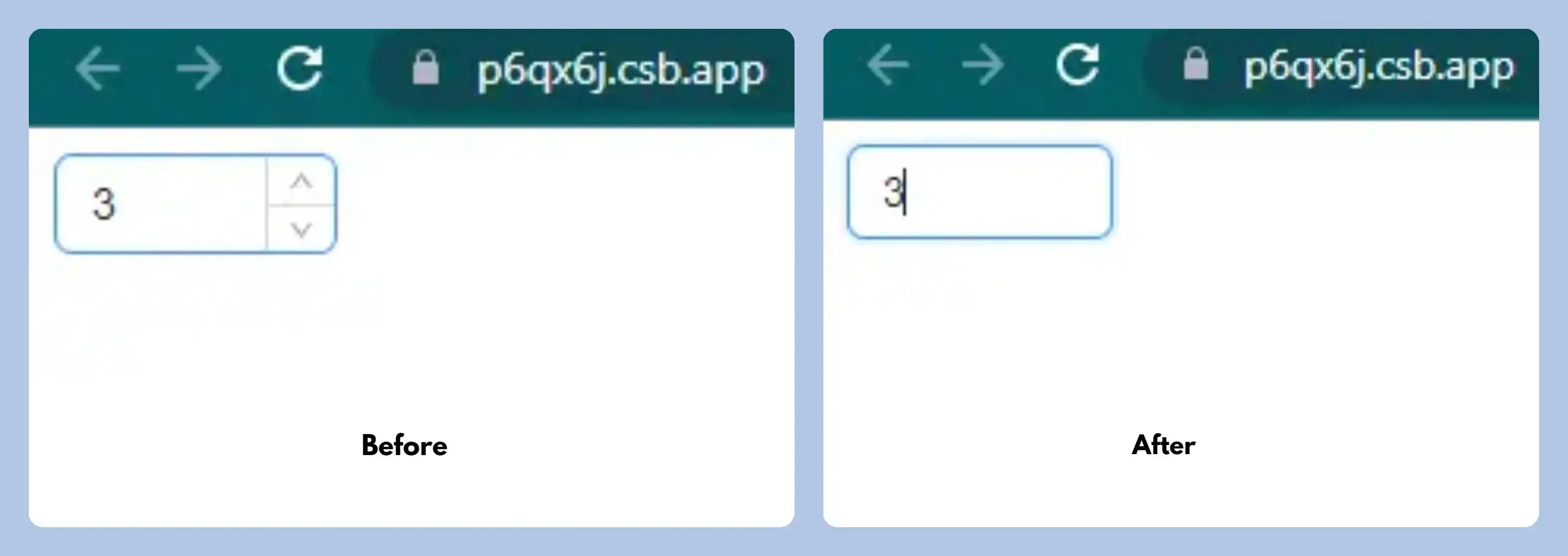


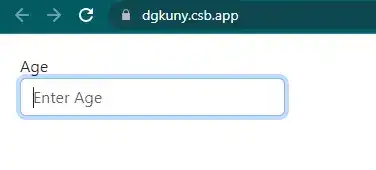


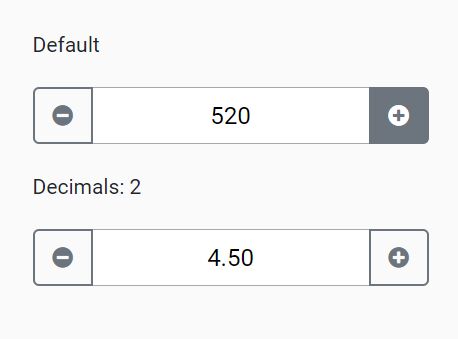









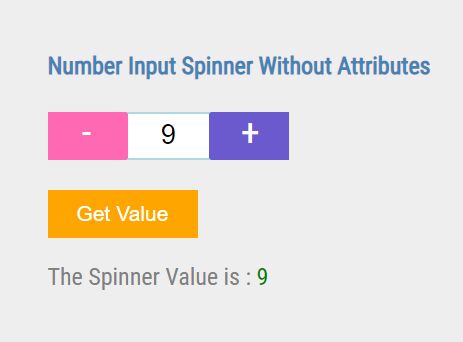


 – Html: Hypertext Markup Language | Mdn” style=”width:100%” title=”input type=”number”> – HTML: HyperText Markup Language | MDN”>
– Html: Hypertext Markup Language | Mdn” style=”width:100%” title=”input type=”number”> – HTML: HyperText Markup Language | MDN”>



 – Html: Hypertext Markup Language | Mdn” style=”width:100%” title=”input type=”time”> – HTML: HyperText Markup Language | MDN”>
– Html: Hypertext Markup Language | Mdn” style=”width:100%” title=”input type=”time”> – HTML: HyperText Markup Language | MDN”>

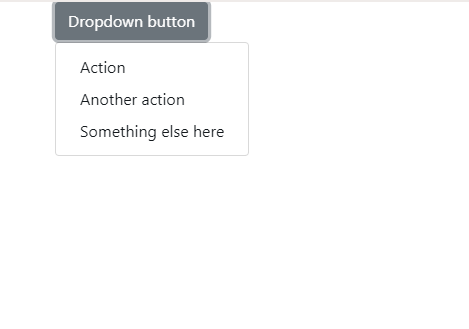

Article link: html input number without arrows.
Learn more about the topic html input number without arrows.
- How To Hide Arrows From Number Input – W3Schools
- Can I hide the HTML5 number input’s spin box? – Stack Overflow
- How to disable arrows from Number input ? – GeeksforGeeks
- How to disable arrows from Number input ? – GeeksforGeeks
- How to force Input field to enter numbers only using JavaScript
- – HTML: HyperText Markup Language | MDN
- HTML DOM Input Number value Property – W3Schools
- How to hide arrows from input type number? – aGuideHub
- How to Hide the HTML5 Number Input’s Arrow Buttons – W3docs
- css hide number input arrows – W3schools.blog
- How to Hide Arrows from Input Number – Tadabase
- input type=”number” without arrows – CodePen
See more: nhanvietluanvan.com/luat-hoc